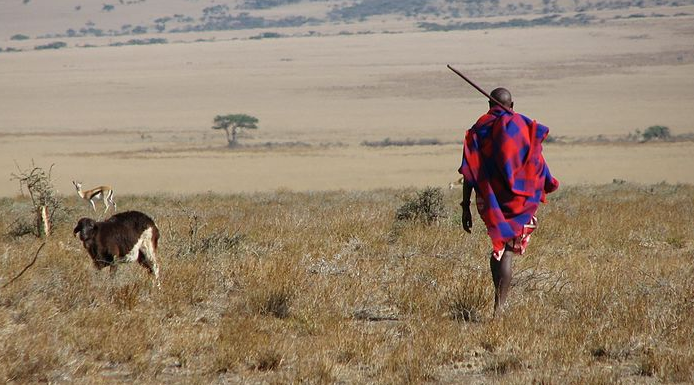The book also accuses the United Nations of failing the people of Acholi in Uganda’s war-torn regions. Some UN officials who had been in Uganda for years had done nothing, and others had not even bothered to visit Acholi region even as the humanitarian catastrophe unfolded.
[International: Uganda And Juba Peace Talks]
Months after the Uganda government and the Lord’s Resistance Army launched peace talks in Juba to end the country’s 22-years civil war, President Yoweri Museveni told a top United Nations official that there could only be a “military solution” to the conflict, according to a new book.
The book also accuses the United Nations of failing the people of Acholi in Uganda’s war-torn regions. Some UN officials who had been in Uganda for years had done nothing, and others had not even bothered to visit Acholi region even as the humanitarian catastrophe unfolded.
In “A Billion Lives: An Eye Witness Report From The Frontlines Of Humanity,” (Simon & Schuster, 2008), Jan Egeland, the former United Nations Undersecretary General for Humanitarian Affairs, describes a November 2006 meeting during which Museveni berated him for going into the bush to meet with Joseph Kony and other LRA leaders.
The book covers Egeland’s trips to many of the world’s trouble spots, including Iraq, the Darfur region, DRC, Lebanon, Gaza, Colombia, Northern Israel, and Uganda, when he headed the UN’s Office for the Coordination of Humanitarian Affairs (OCHA) for three and a half years. The book’s chapter dealing with Uganda is titled “Uganda’s Twenty Thousand Kidnapped Children.”
“You were just wasting your time in the bush with them. I told you so,” Museveni says, when the two met, according to
Egeland’s book.
“No, I think it was useful to meet them,” Egeland writes of his own response. “It was good for peace and therefore to your benefit,” Egeland adds, referring to his meeting earlier that day with Kony, his deputy Vincent Otti, and other LRA commanders, in their hideouts near the border with the Sudan and Central African Republic. (pg. 211)
“No, those talks were not to our benefit,” Museveni responds, according to Egeland’s book. “Let me be categorical–there will only be a military solution to this problem.”
The exchange occurred November 12, 2006, fully four months after the Juba Peace Talks had been launched, with Riek Machar, vice president of Southern Sudan, as the mediator.
What’s more, Ruhakana Rugunda, Uganda’s minister of internal affairs and the government’s chief negotiator at the peace talks, was sitting in on that meeting, Egeland writes, as were other top officials, including Sam Kutesa, the foreign affairs minister.
Egeland says these top government officials were basically docile observers during his heated discussion with Museveni.
“Museveni seems pleased with the tough and direct exchange,” Egeland writes. “He clearly enjoys the verbal jousting. Within his own government nobody dares to argue with him. Not once in three hours do any of his ministers interrupt.” (pg. 213)
The meeting occurred in an office in Uganda’s Parliament buildings.
“But,” Egeland continues, referring to his exchange with Museveni, “we have, for the first time, an absence of fighting and terror due to the peace process.”
“No, that is only due to the efforts of our army!” Museveni responds, according to Egeland’s book.
Egeland writes that he was able to wrest concessions from Museveni, although the credibility of Egeland‘s conclusion, considering the source making the “concession,” is anybody’s guess.
“The president even agrees to withdraw the Ugandan army from two bases close to the eastern assembly point; the army is currently blocking access for LRA fighters who should gather there according to the cease-fire agreement,” Egeland writes, which in itself is a remarkable revelation, and confirms the assertions that the LRA had made at the time that it was the Uganda government that was actually blocking access to the designated confinement camps for the rebels.
Egeland adds, of their discussion: “During the last two hours of our meeting he is only angry once, when I bring up our growing concern with widespread violence in the eastern Karamoja area, where civilians are being killed in battles between cattle rustlers, [ethnic] militias, and army units. ‘Do not lecture me on how to disarm illegal armed groups and cattle rustlers. On that I am an expert,’ he says forcefully.” (pg. 213)
Egeland also provides his overall assessment of Museveni. He recalls having a three-hour talk under a tree in Museveni’s cattle farm and how Museveni told him to take his helicopter “to see the skulls of the tens of thousands among his own people who died in the 1970s to ‘get perspective’ on my criticism of the government’s policies in northern Uganda.” (pg. 212).
“He is an impressive leader,” Egeland notes, “but he had become increasingly authoritarian and has so far failed in northern Uganda, where the Acholi people feel alienated and where neither civilian nor military authorities have managed to avoid some twenty years of horrors. The LRA has not been the only bloody rebellion in the north.”
“We agree that the talks must produce tangible agreements that can lead to disarmament, demobilization, and reintegration of the LRA and that a true process of reconciliation must follow the peace process,” Egeland adds, in his book. “Museveni, who had asked the ICC to indict the LRA leaders, was of the opinion that he could stop the international judicial process if a good agreement to end the war was reached. I try to tell him, as the chief ICC prosecutor had asked me to stress, that the decision was no longer in the hands of the Ugandans.”
This is also an interesting point. The Uganda government has long been aware that it’s not in a position to have the International Criminal Court’s indictments removed against the LRA’s top leaders, Kony, Vincent Otti, Okot Odhiambo, Raska Lukwiya, and Dominic Ongwen; yet the Museveni government continues to dangle this illusory “carrot” over which it has no control, as inducement to the LRA to sign a peace pact. (Incidentally, Otti, Odhiambo, Ongwen, and Lukwiya are all, rather too conveniently, reported to have been killed. In 2006 the ICC said a DNA test confirmed a body identified as Ongwen’s wasn’t. Separately, in 2006, The Wall Street Journal also reported that Uganda’s army was being investigated by the ICC on alleged war crimes committed in the Democratic Republic of Congo).
Egeland reveals that his focus on northern Uganda’s tragedy increased after his first visit there in 2003.
“What I saw around the towns of Kitgum and Gulu was an outrage,” he writes. “Hundreds of thousands of men, women, and children lived in appalling conditions in overcrowded, filthy camps. With the exception of the UN World Food Progamme and a handful of courageous Ugandan and international nongovernmental organizations, humanitarian workers were absent in the midst of the misery. The contrast with the empty refugee camps and well-stocked warehouses that I had just visited in Iraq and on its borders was stark.” (pg. 201).
“Why had no one in the international community woken up to the carnage of northern Uganda?” Egeland adds, and delivers a searing indictment on the conspiracy of silence that has enabled to unfold, what Olara Otunnu, the former UN Undersecretary General in charge of children in war zones once called the “silent genocide” in Acholi.
“Where had I been while in charge of the Norwegian Red Cross and during many years of humanitarian, human rights, and peace work? It was incomprehensible. The capital, Kampala, was bursting with UN and other aid officials since Uganda was one of the darlings of Western governments and development agencies. Few, it appeared, had looked far beyond the horizon at the outrage being visited on the children of the north.” (pg. 202)
“The next morning I asked my UN colleagues to meet me on the veranda of our guest house,” Egeland continues. “I was angry and still reeling from the desperately sad scenes of the day before. Some of those I was addressing had worked in Uganda for months, even years, but had never bothered to make the daylong journey north. ’I hope you all agree we cannot continue like this,’ I told a group of nodding heads. ’We have failed utterly here. You and your organizations have to step up the action dramatically and I will do all I can to wake up donors and headquarters.’ They were rightly embarrassed.” (pg. 203)
Egeland describes his disappointment in not being to get the LRA to release children and women in captivity when he met with the rebel commanders; he also writes that he warned Kony and the LRA leadership that the whole world would be watching their conduct with respect to the peace talks.
Egeland, who lives in Oslo, Norway, is now Director General of the Norwegian Institute of International Affairs. He clearly has excellent understanding of the untrustworthiness of the principal characters behind the Acholi tragedy, Kony and Museveni.
Egeland demonstrates intimate knowledge of the Uganda conflict in his book; he could play a superb role as co-mediator with Dr. Machar, in lending international credibility and getting the Juba Peace Talks back on track.
To comment, to subscribe to or advertise in New York’s leading Pan African weekly investigative newspaper, please call (212) 481-7745 or send a note to
Also visit out sister publications Harlem Business News www.harlembusinessnews.com publications and The Groove Music magazine www.thegroovemag.com
“Speaking Truth To Power.”











